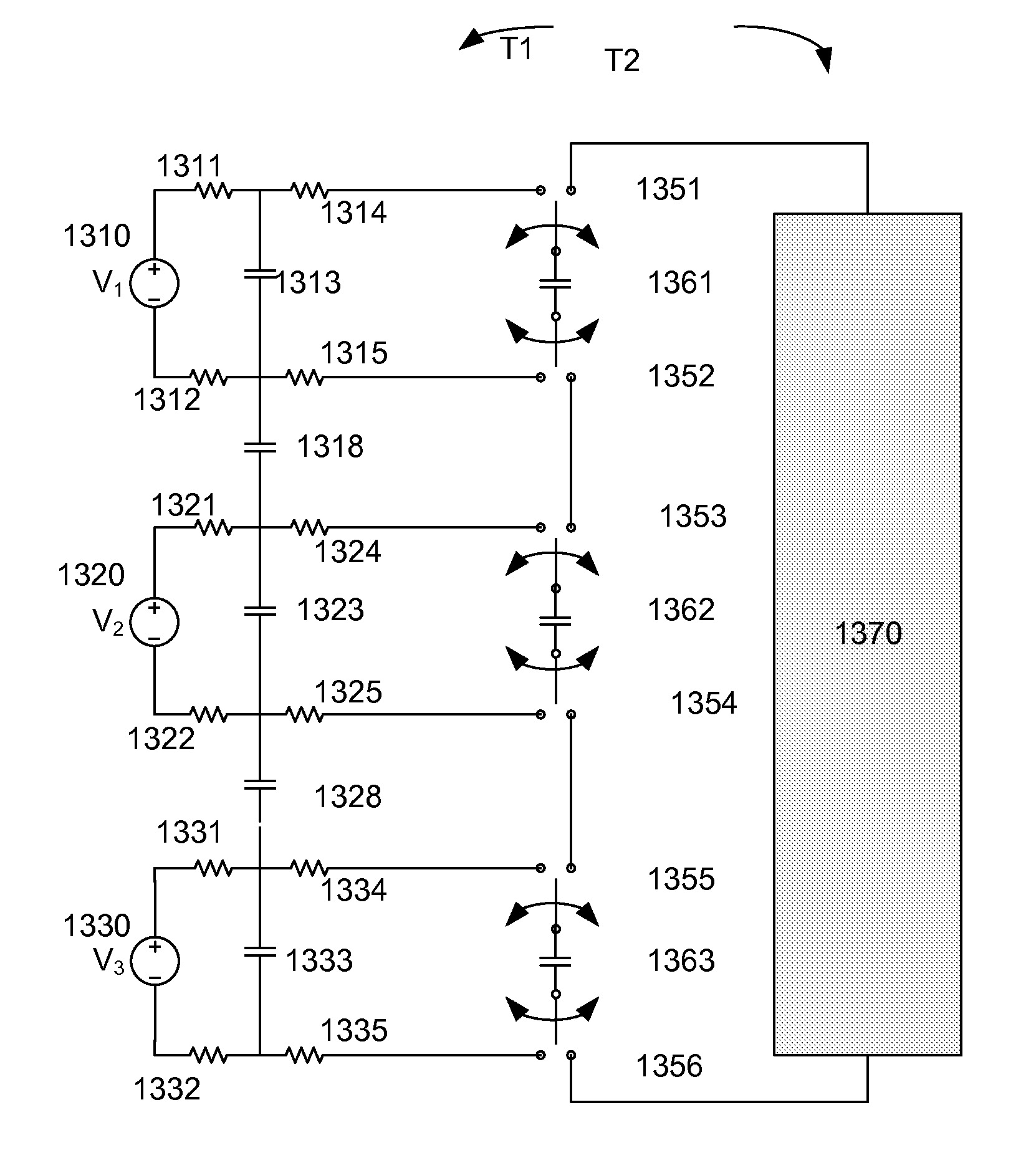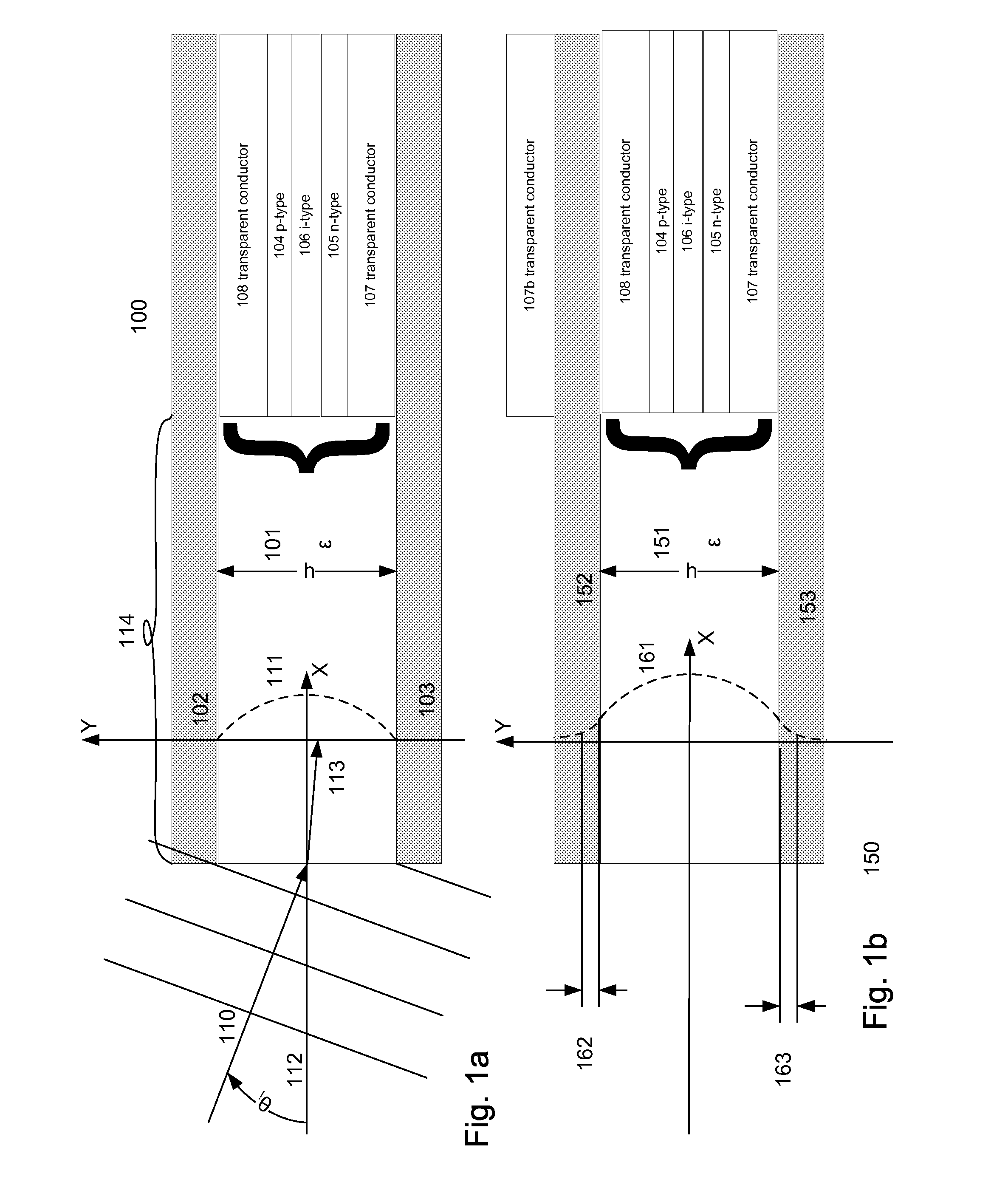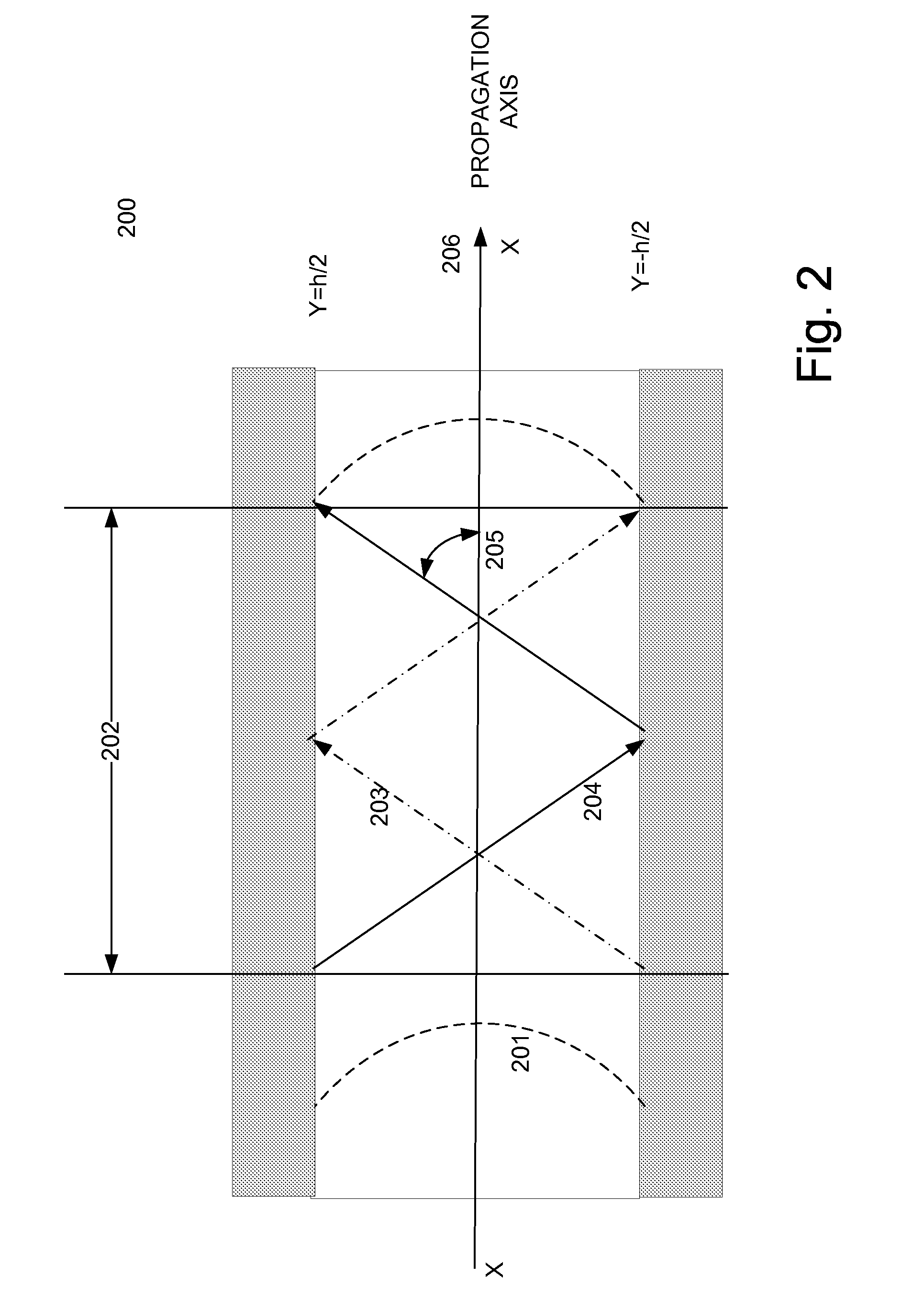Energy conversion cells using tapered waveguide spectral splitters
a technology of energy conversion cells and spectral splitters, which is applied in the field of cells, can solve the problems of affecting the efficiency of energy conversion cells, and requiring kinetic energy for machines, etc., and achieves the effects of easy manufacturing, increased energy efficiency of radiant energy conversion cells, and low cos
- Summary
- Abstract
- Description
- Claims
- Application Information
AI Technical Summary
Benefits of technology
Problems solved by technology
Method used
Image
Examples
Embodiment Construction
[0071]Certain figures and embodiments of the invention will be described herein by way of example to increase the understanding of different aspects of the invention.
[0072]FIGS. 1a and 1b alternately depict a short region of waveguide with insignificant variation of thickness, and are provided for simple explanation of the propagation characteristics of radiant energy within such waveguides. For the purpose of explanation, FIGS. 1a and 1b may be considered to represent a cutout of a short region of the CRTR tapered core waveguide.
[0073]FIG. 1.a shows a two dimensional waveguide 100 comprising a waveguide core material 101 of thickness (width), h, formed between conductors 102 and 103. Optionally, the waveguide core material 101 could be replaced by a plurality of layers forming an aggregate optically equivalent to a uniform material having dielectric constant, E, and the same overall thickness. Such construction would be recognized as equivalent by the skilled artisan. In plurality ...
PUM
 Login to View More
Login to View More Abstract
Description
Claims
Application Information
 Login to View More
Login to View More - R&D
- Intellectual Property
- Life Sciences
- Materials
- Tech Scout
- Unparalleled Data Quality
- Higher Quality Content
- 60% Fewer Hallucinations
Browse by: Latest US Patents, China's latest patents, Technical Efficacy Thesaurus, Application Domain, Technology Topic, Popular Technical Reports.
© 2025 PatSnap. All rights reserved.Legal|Privacy policy|Modern Slavery Act Transparency Statement|Sitemap|About US| Contact US: help@patsnap.com



